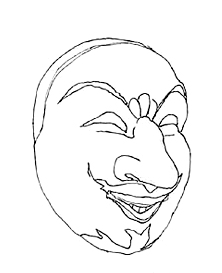|
||
 |
||

Houruuji Shousouin @²³q@
@
(C)2001 Japanese Architecture and Art Net Users System.@No reproduction or republication without written permission.
fΪΜeLXgEΚ^ECXgΘΗASΔΜRecΜ³f‘»E]ΪπΦΆά·B
|
||||||
| @ | ||||||
| Chikyuu@nv | ||||||
| KEY WORD :@art history / sculptures | ||||||
| @ | ||||||
| Also, enjiraku or enchiraku ~ny. A piece in imperial court dancing *bugaku y and the mask *bugakumen yΚ used in the dance, which represents a smiling red faced man. Chikyuu is a quiet dance hiramai ½ of the Right u-no-mai E originally from Korea komagaku νy. Performed by four to six people moving in unison and wearing flowing cloaks over pantaloons kasaneshousoku P© with colorful helmets in the shape of a phoenix torikabuto Ήb. Chikyuu often paired with the congratulatory piece Manzairaku Ξy, celebrates the eternity of heaven and earth with slow, graceful movements that bring life to the radiant joy of the mask. The classic form of the Chikyuu mask is well represented by the mask by Inshou σ (1185), housed in Kasuga Taisha tϊεΠ, Nara. Its aquiline nose has a dynamic thrust. The curled smiling eyes and elegantly curved, eyebrows enliven the impression of laughter emerging from the parted lips. Between the eyebrows is a medallion decoration. The oldest extant mask belongs to Houryuuji @² in Nara. Although the distinctive iconographic features are present the expression lacks the exuberance of the later Chikyuu masks. Fine early examples, with rounded, relaxed features, are those at Tamukeyama Jinja θόR_Π (1042) in Nara. | ||||||
| @ | ||||||

Houruuji Shousouin @²³q@
|
||||||
@ |
||||||
| REFERENCES: | ||||||
| @ | ||||||
| EXTERNAL LINKS: | ||||||
| @@ | ||||||
| NOTES: | ||||||
| @ | ||||||
(C)2001 Japanese Architecture and Art Net Users System.@No reproduction or republication without written permission. fΪΜeLXgEΚ^ECXgΘΗASΔΜRecΜ³f‘»E]ΪπΦΆά·B |
||||||
| @ |